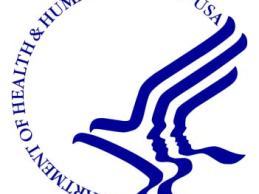What You Should Know:
- The U.S. Department of Health and Human Services’ (HHS) Office of the National Coordinator for Health Information Technology (ONC) today announced the establishment of an $80M Public Health Informatics & Technology Workforce Development Program (PHIT Workforce Program) to strengthen U.S. public health informatics and data science.
- The PHIT Workforce Program aims to train more than 4,000 individuals over a four-year period through an interdisciplinary approach
Read More
Public Health
Linux Foundation Public Health creates the Global COVID Certificate Network
What You Should Know:
- Linux Foundation Public Health (LFPH) announced a new collaborative network, the Global COVID Certificate Network, to facilitate the safe and free movement of individuals globally during the COVID pandemic.
- The new collaboration will establish a global trust registry network that enables interoperable and trustworthy exchanges of COVID certificates among countries for safe reopening and provide related technology and guidance for implementation.
- The
Read More
HHS Launches VC Partnership to Develop Solutions to Prevent Future Pandemics, Public Health Emergencies
What You Should Know:
- The U.S. Department of Health and Human Services (HHS) launches a new $50M venture capital partnership with nonprofit organization Global Health Investment Corporation (GHIC) to accelerate development and commercialization of technologies and medical products needed to respond to or prevent public health emergencies, such as pandemics, and other health security threats
- Through the BARDA Ventures program, the Biomedical Advanced Research and Development
Read More
Talking about Cybersecurity Vulnerabilities in Medical Devices Shouldn’t be Taboo
According to the National Vulnerability Database, 18,353 vulnerabilities were reported in 2020. That’s nearly three times the volume of vulnerabilities reported five years ago, and higher than any year in the previous two decades. Given the rise in connected devices, this increase is not entirely unexpected. If that’s the case, shouldn’t we be seeing more vulnerability disclosures related to medical devices?
The U.S. Department of Homeland Security Cybersecurity and Infrastructure
Read More
How COVID-19 Made Employee Safety Work for Employees
Over the past decade, the move toward automated hygiene, cleaning, and sanitation solutions has steadily accelerated and its effective implementation has positively impacted organizations who quickly recognized its potential value. Enhanced productivity, increased worker safety, an opportunity to repurpose labor, and improved water savings are just a few of the reasons why a growing chorus of organizations embraced the automation revolution.
COVID-19 has served as a reminder that
Read More
PHINs: Addressing the Fundamental Flaws that Have Broken Healthcare
The fundamental problem with healthcare can be summed up in one sentence: We expect healthcare services that cater to our individual needs, yet the health care system operates under a one-size-fits-all, trial-and-error model. It is a model that results in missed diagnoses, protracted illnesses, and even premature death and wastes $935 billion annually.
The financial toll of this outmoded approach pales in comparison to the human toll. More than 128,000 people in the U.S. die each year
Read More
AWS Launches Next Phase of Diagnostic Development Initiative
What You Should Know:
- Today, Amazon Web Services (AWS) launched the next phase of Diagnostic Development Initiative and expanded funding scope.
- In the first phase of the initiative, AWS has supported 87 organizations to date through this effort ranging from startups, nonprofits, research institutions, and businesses in 17 countries and awarded $8 million in computing credits and customized expertise from AWS Solutions
Read More
Why the Digital-First, Patient-Centered Care is Critical to Healthcare
In the turmoil of one of the hardest years the healthcare industry has experienced, many healthcare organizations innovated nearly overnight, transforming bedside tablets into virtual care providers and parking garages into field hospitals. Through the help of agile, flexible technology, healthcare has empowered providers to support patient care anywhere.
The pandemic created a tipping point: The healthcare industry must accelerate its drive toward a digital-first mentality.
Read More
How a Virtual Care Mindset Leads to Greater Patient Acceptance and Sustainable Telehealth Growth
There's no question that the demand for telehealth and virtual care has grown exponentially over the last twelve months. With that growth has come a fundamental shift in the attitude toward virtual care. No longer do patients and providers take a "let's try it" approach—now, it's "we must do it." This is evidenced by the number of telehealth claims filed. In 2020, telehealth claims skyrocketed, increasing by 2,938% in November 2020 versus November 2019 as patients demanded virtual options and as
Read More
How NLP Can Uncover Social Determinants of Heart Disease
Heart disease is the leading cause of death for people of most racial and ethnic groups in the United States. Cardiovascular disease-related deaths—which occur every 36 seconds—cost our country about $219 billion each year, according to the Centers for Disease Control and Prevention (CDC). People with poor cardiovascular health are also at increased risk of severe illness from COVID-19, so the time to act is now. There’s no time like the present to look at major risk factors—from obesity and
Read More










